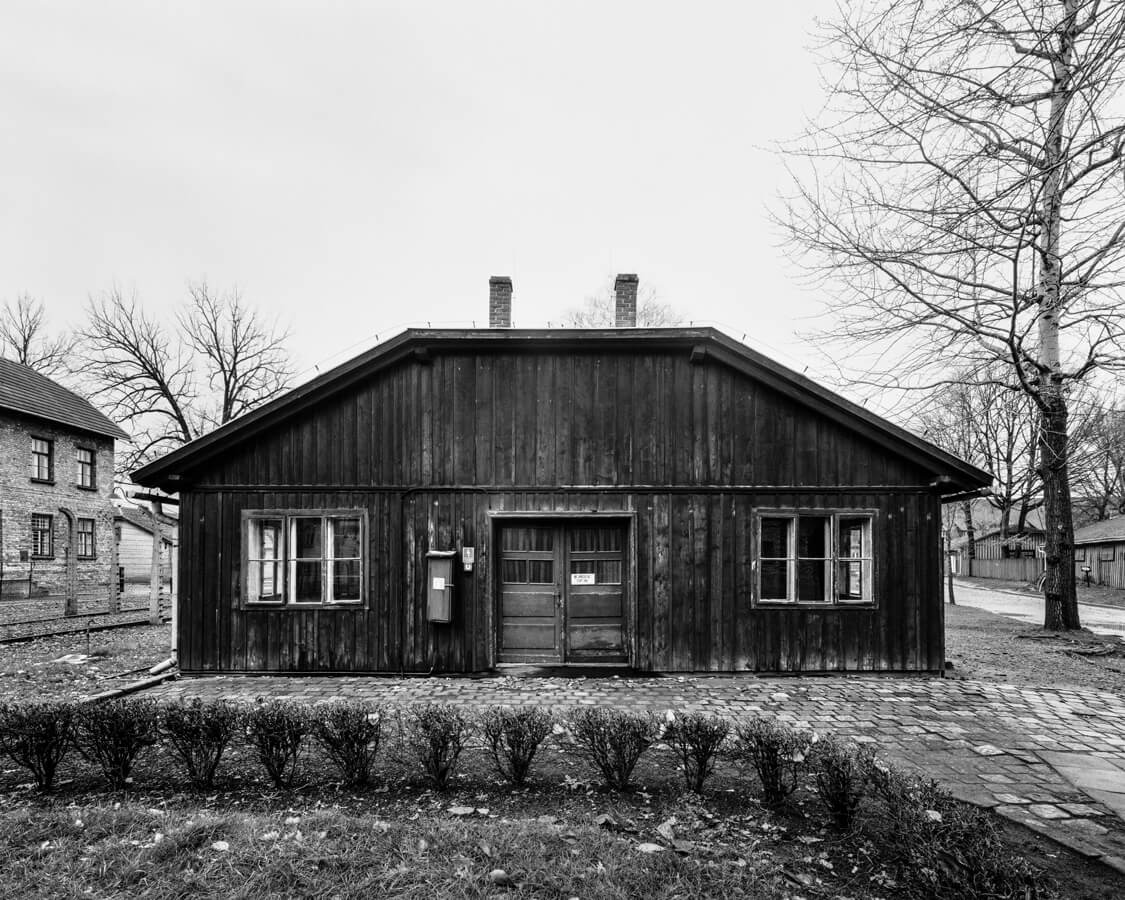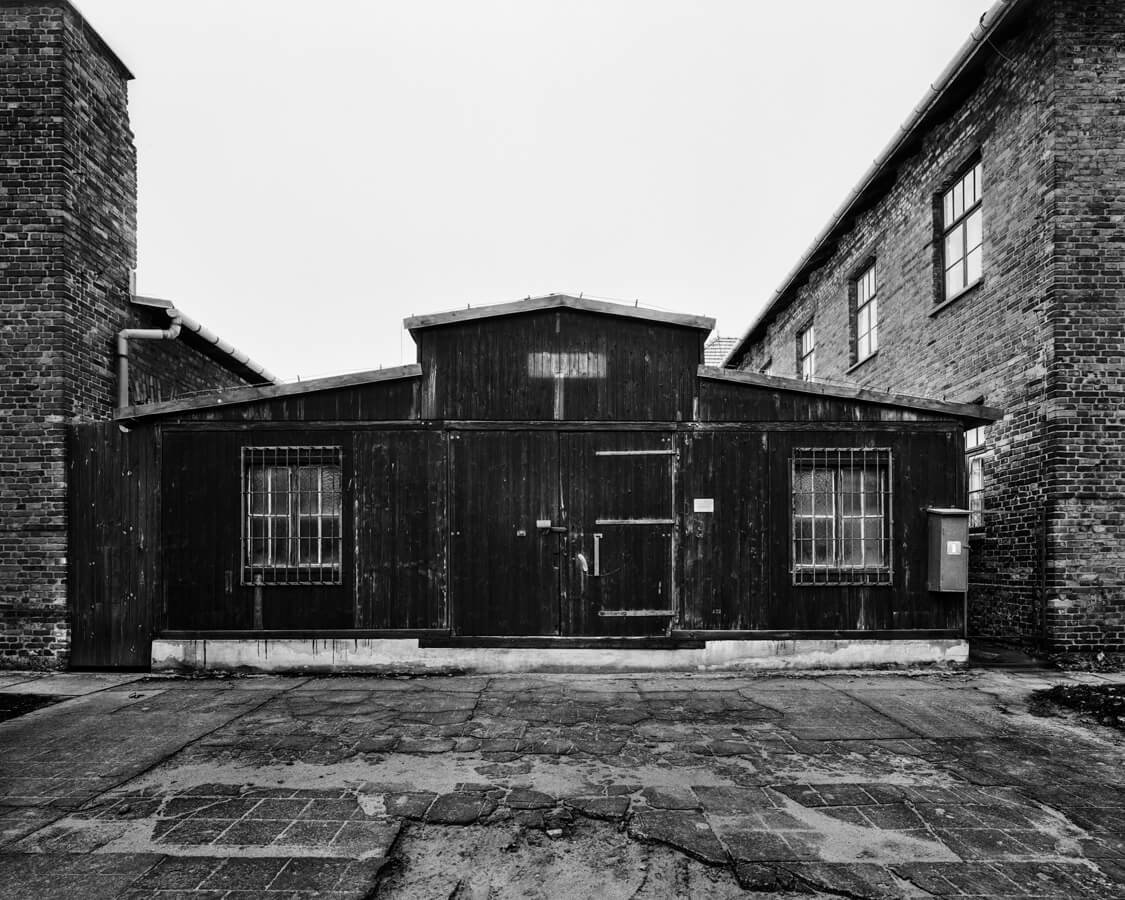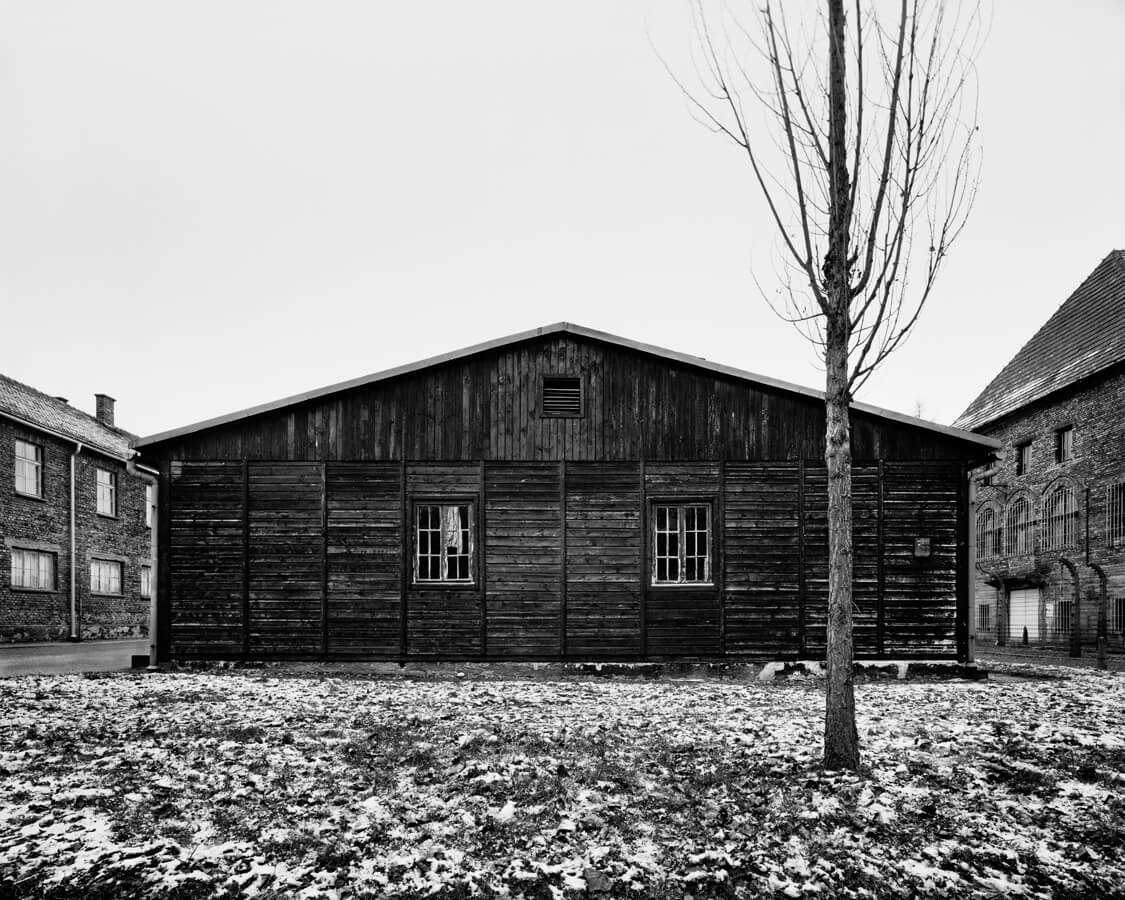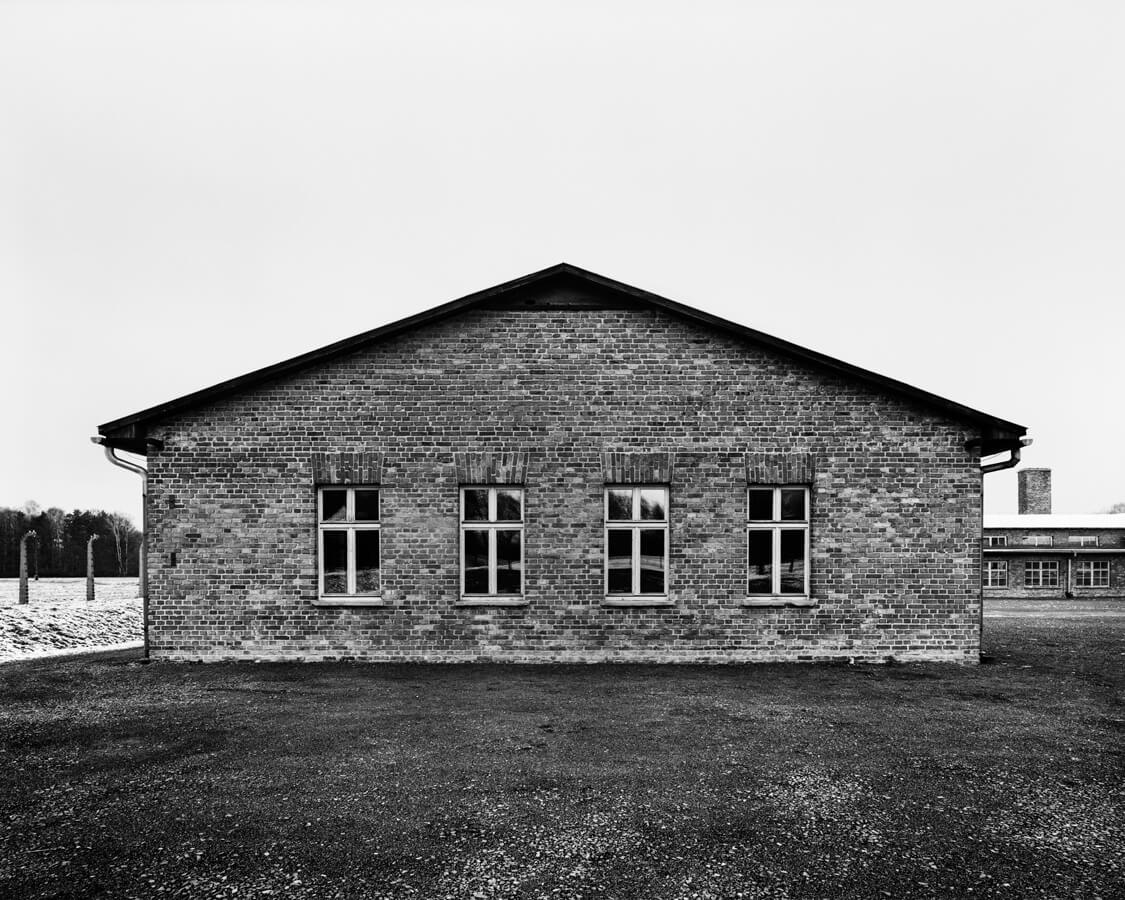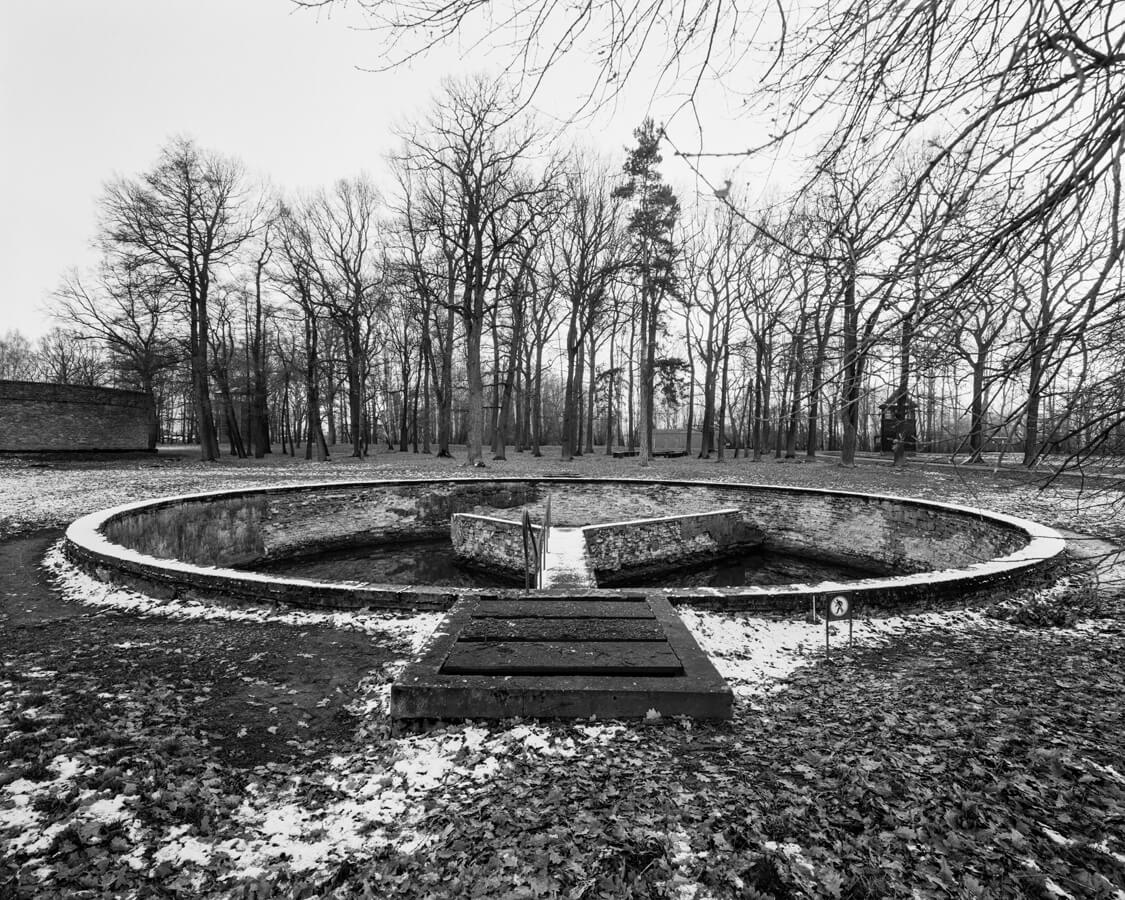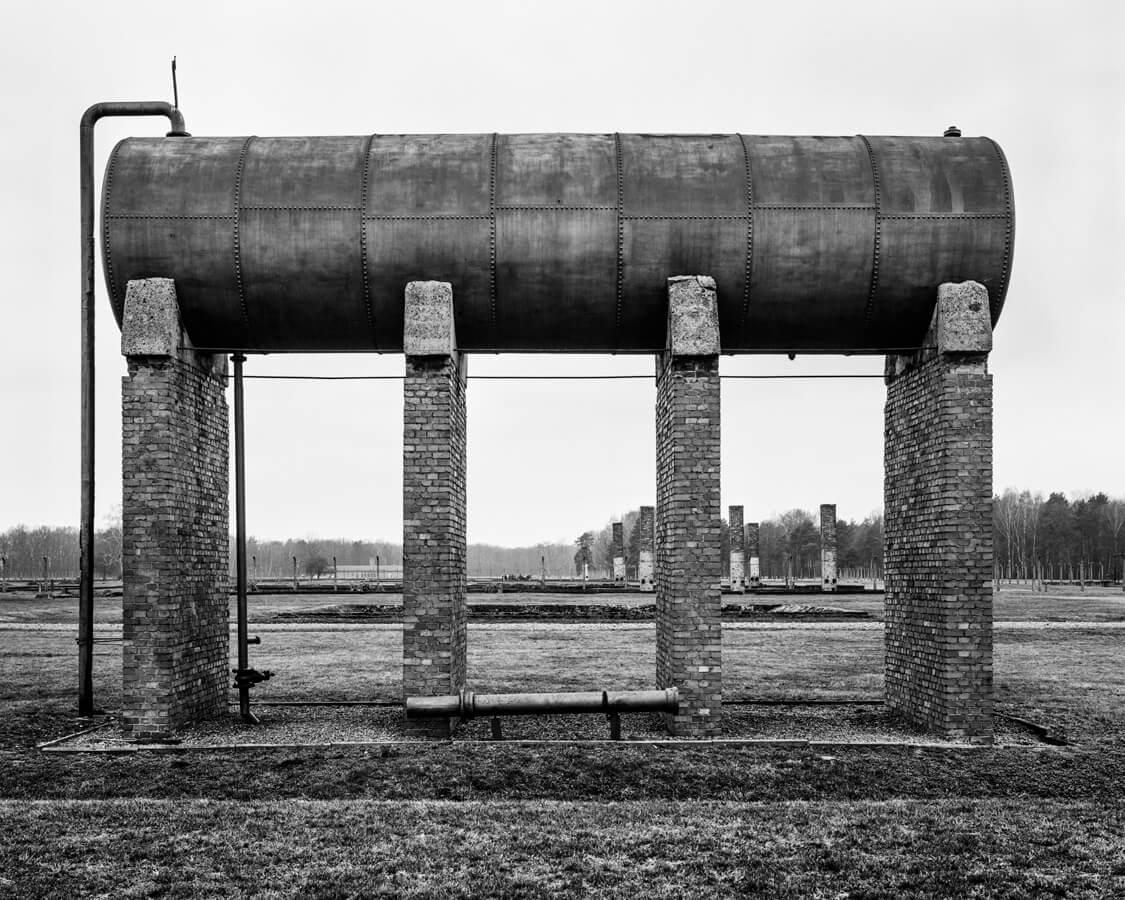auschwitz
ultima ratio of the modern age
2015 — 2018
According to the photographers Bernd and Hilla Becher, the form of an industrial building is determined strictly by its function. The design logic of the architecture in the Auschwitz-Birkenau concentration camp was defined by the fact that the forms of the buildings were absolutely subordinate to their function as instruments of industrial genocide. Consequently, this architecture was the pure realization of the famous principle „form follows function“. This principle was created by Louis Sullivan, an American architect who became known as one of the forefathers of architectural modernism. In this context, Zygmunt Bauman also pointed out that „the modern civilization […] certainly was not the only one, but was probably a necessary precondition for the Holocaust“ (in: Dialektik der Ordnung: Die Moderne und der Holocaust).
The Auschwitz concentration camp was founded in 1940 on the orders of Heinrich Himmler, the head of the Waffen SS. For the location of the first unit, the Auschwitz main camp („KL Auschwitz I“), a former Polish garrison was chosen. Some of the garrison buildings, which were located in the town of Oświęcim, were raised up by two storeys and adapted to their new purpose as accommodation for the prisoners. On the other hand, the extermination camp in the neighboring village of Brzezinka (German: Birkenau), the „KL Auschwitz II“, was newly founded on a moorland terrain.
The typological examination of the objects in the presented photographic cycle should enable the spectator to compare various rationalization methods in an architecture designed to serve for efficient mass killing. To avoid the narrative character, and allow an objective analysis of the illustrated things („as they are“), the images have been made within similar and constant lighting conditions and central composition. The photographs were taken on black and white large-format negatives.
This measure was funded by the Kunststiftung des Landes Sachsen-Anhalt and supported by International youth meeting centre in Oświęcim/Auschwitz foundation.


According to the photographers Bernd and Hilla Becher, the form of an industrial building is determined strictly by its function. The design logic of the architecture in the Auschwitz-Birkenau concentration camp was defined by the fact that the forms of the buildings were absolutely subordinate to their function as instruments of industrial genocide. Consequently, this architecture was the pure realization of the famous principle „form follows function“. This principle was created by Louis Sullivan, an American architect who became known as one of the forefathers of architectural modernism. In this context, Zygmunt Bauman also pointed out that „the modern civilization […] certainly was not the only one, but was probably a necessary precondition for the Holocaust“ (in: Dialektik der Ordnung: Die Moderne und der Holocaust).
The Auschwitz concentration camp was founded in 1940 on the orders of Heinrich Himmler, the head of the Waffen SS. For the location of the first unit, the Auschwitz main camp („KL Auschwitz I“), a former Polish garrison was chosen. Some of the garrison buildings, which were located in the town of Oświęcim, were raised up by two storeys and adapted to their new purpose as accommodation for the prisoners. On the other hand, the extermination camp in the neighboring village of Brzezinka (German: Birkenau), the „KL Auschwitz II“, was newly founded on a moorland terrain.
The typological examination of the objects in the presented photographic cycle should enable the spectator to compare various rationalization methods in an architecture designed to serve for efficient mass killing. To avoid the narrative character, and allow an objective analysis of the illustrated things („as they are“), the images have been made within similar and constant lighting conditions and central composition. The photographs were taken on black and white large-format negatives.
This measure was funded by the Kunststiftung des Landes Sachsen-Anhalt and supported by International youth meeting centre in Oświęcim/Auschwitz foundation.





